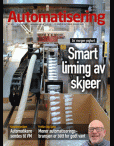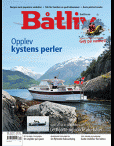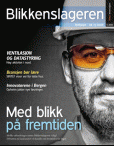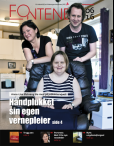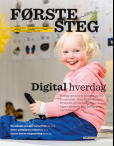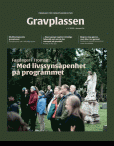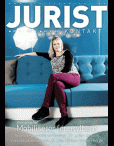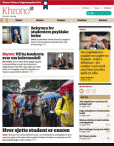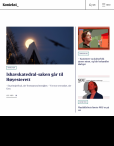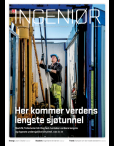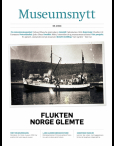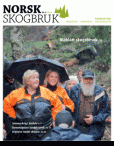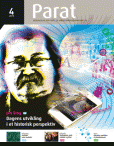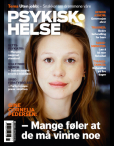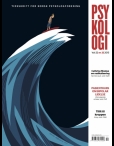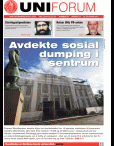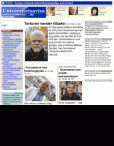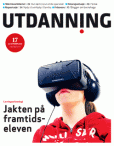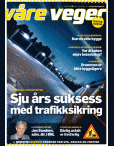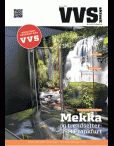
Introduction
Companies that continuously search for opportunities to innovate and redesign their business model are found to achieve higher growth rates and return to market share (e.g. Lindgardt et al. 2009; Sosna et al. 2010). The need for innovative business models is especially relevant with regard to strengthening the competitiveness of Norwegian companies. With the onset of the "Fourth Industrial Revolution" (as it is referred to by some economists), we can expect an acceleration in global competition paired with increased digitalization and shifting consumer trends that will contribute to the need for new business models that take advantage of these ongoing developments.
Notably, many of the top 100 world's most innovative companies are not known for their massive R&D spending or technological leadership (Saebi, 2016). What differentiates these companies from less innovative ones is their ability to incorporate innovative thinking into their business model design. Results from the recent Norwegian Innovation Index survey indicate that companies that are able to (1) deliver high-quality goods and services, (2) innovate on a regular basis, and (3) launch innovations that trigger active emotions are perceived as more attractive by customers, which, in turn, enhances customer loyalty towards the company (Andreassen, Lervik-Olsen & Kurtmollaiev, 2017a). However, "in a number of international rankings of nations' innovativeness, Norway lags far behind its neighbouring countries Sweden, Denmark and Finland" (Andreassen et al. 2017b). More specifically, a recent survey among Norwegian companies showed that only a small percentage of companies had innovated their business model in the past five years (Saebi & Singh, 2015). This raises the question of why, despite acknowledging the importance and necessity of engaging in innovation, many firms struggle to do so.
To date, academic research on this question is scant. Arguably, two main reasons account for this significant research gap. First, business model innovation (BMI) research is still at an early stage. Despite massive resonance in the academic as well as the practitioner-oriented literature, Foss and Saebi (2017, p. 1) question "whether a true theory of BMI exists", and argue that literature on BMI does not just "face problems with respect to construct clarity [but also] has gaps with respect to the identification of antecedent conditions, contingencies, and outcomes".
Second, we lack qualitative research that investigates the challenges of BMI across different industries. As Christensen et al. (2016, p. 32) keenly observe, there is no "satisfactory theory for what's causing the problem, and under what circumstances it can be overcome". While some studies point towards the challenges of BMI, these studies either remain at a conceptual level or focus on a single case study (e.g. Sosna et al. 2010; McGrath, 2010; Chesbrough, 2010; Doz & Kosonen, 2010; Wirtz et al. 2010; Thompson & MacMillan, 2010; Smith et al. 2010).
Consequently, little is known about the facilitators and barriers for BMI. Therefore, in this study we first briefly review the concept of BMI to aid in a better understanding of its distinctive characteristics. Next, based on multiple interviews with Norwegian managers across different industries, we analyse the barriers and challenges associated with initiating and implementing BMI. Our findings lead to a better understanding of the innovation landscape in Norway. This insight can be particularly useful for managers as well as policymakers. While the interview data are limited to Norway, our results are potentially generalizable to countries with similar economic, cultural, and social structures.
The State of Business Model Innovation in Norway
In 2015, researchers at the Center for Service Innovation conducted a survey on the state of business model innovation in Norway. Below, we briefly recapture the main findings of this survey as reported in Saebi and Singh (2015) as well as Saebi (2016). CEOs of companies across industries were asked whether changes to one or more components of their business model had taken place in the last five years (2010-2015), and whether these changes were new to the company (business model adaptation) or new to the industry (business model innovation). Among the 284 companies surveyed in Norway, business model innovation appears to be in its infancy. The findings showed that if changes had taken place, these were limited to one or two business model components only, and companies were more likely to make modular changes to one business model component without affecting the core logic of their business. Further, only a small percentage of these changes can be qualified as innovative (for more information regarding data collection and measurement of core constructs, see Saebi and Singh, 2015; Saebi, 2016).
Figur 1 Adaptation versus innovation.
Literature Review
To understand why the level of business model innovation is low in Norway, it is essential to first clarify the concepts of business models (BM) and business model innovation (BMI) as these concepts are relatively new and lack established definitions.
What Constitutes a Business Model?
Between 1995 and 2010, there have been over 1177 articles published in peer-reviewed academic journals that address the notion of a business model (Zott et al. 2011). Despite the increasing academic attention, there is still no commonly accepted definition and understanding of what business models are (Santos, Spector & Van Der Heyden, 2009; Zott et al. 2011; Foss & Saebi, 2018). Even in 2005, Shafer et al. (p. 200) describe the term as "desperately seeking definition", expressing the urgency of clarifying the term so that academic progress can be made in the term's development. As the concept of BM continues to grow in popularity, Zott et al. (2011, p. 2) point out that this "lack of definitional clarity promotes dispersion rather a convergence of the perspectives, hindering cumulative research progress on business models", and thus BMI. While many researchers acknowledge the obstacles in the lack of definitional clarity, this poses significant problems for practitioners, where "none of these definitions, however, have been accepted fully by the business community" (Shafer et al. 2005, p. 200). One of the earliest investigations of business models defined the term as "an architecture for the product, service and information flows, including a description of the various business actors and their roles; a description of the potential benefits for the various business actors; and a description of the sources of revenues" (Timmers, 1998, p. 2). Among the more frequently cited definitions of the business model are:
"The content, structure, and governance of transactions designed so as to create value through the exploitation of business opportunities" (Amit & Zott, 2001, p. 1)
"The story of how the company works" (Magretta, 2002, p. 4)
"The organizational architecture for value creation, value delivery and value capture" (Teece, 2010, p. 172)
"The rationale of how an organization creates, delivers, and captures value" (Osterwalder & Pigneur, 2010, p. 14), and
"The logic of the firm, the way it operates and how it creates value for its stakeholders" (Casadesus & Ricart, 2010, p. 196).
While there is a divergence in the use of terminology, most studies concur on four main components of the business model, including the (1) target segment, (2) value proposition, (3) value capture, and (4) value delivery. Thus, we adopt these four components as the main defining elements of a business model.
What is Business Model Innovation and Why is It Challenging?
Though practitioners and researchers identify innovative business models as a new and important source of competitive advantage (Chesbrough, 2010; Teece, 2010; Zott & Amit, 2007), no precise definition of BMI has yet emerged (Foss & Saebi, 2017, 2018). The lack of consensus regarding the definition of BM makes it increasingly difficult to conceptualize BMI, as there are variances in the way innovation is defined, "such as in terms of novelty or radicalness or the role business model innovation plays in enhancing a firm's performance" (Foss & Saebi, 2015, p. 7).
At a conceptual level, BMI has been defined as "the discovery of a fundamentally different business model in an existing business" (Markides, 2006, p. 20), or as the process of "designing a new, or modifying the firm's extant activity system" (Amit & Zott, 2010, p. 2). It thereby aims at actively renewing a firm's core business logic rather than limiting its scope of innovation to products and/or services. It also builds on the business model's capacity to integrate all of the firm's current business model components, external environment, and interfaces with customers and partners (Amit & Zott, 2010). Amit and Zott (2012, p. 5) continue to define BMI as consisting of "adding new activities, linking activities in novel ways, or changing which party performs an activity." We concur with Foss and Saebi's (2017, p. 2) definition of BMI as "designed, novel, nontrivial changes to the key elements of a firm's business model and/or the architecture linking these elements".
In most cases, BMI will require action and decisions from top management and might involve organization-wide changes in the way the company creates, delivers and captures value (Foss & Saebi, 2018). This can lead to several challenges as pointed out in extant literature. On a cognitive level, managers might fall victim to the "bias of current business model" (Chesbrough & Rosenbloom, 2002) and thus fail to recognize threats or opportunities outside their logic of doing business. Often, it is only when threats are imminent that managers act upon the need to adapt their existing business model (Saebi, Lien & Foss, 2017). Further, in cases where managers recognize the need for change, it might not be clear what the new business model should be (Chesbrough, 2010). Thus, a lack of managerial know-how and expertise in BM can constitute an important barrier to BMI.
On an organizational level, the development of a new BM might be resisted due to conflicts with the prevailing BM, or with the underlying configuration of assets under the current model (Christensen, 1997; Amit & Zott, 2001). Regarding implementation, Doz and Kosonen (2010, p. 370) point out that the stability within a business model structure limits the strategic agility of the firms, because they then "fall victim to the rigidity of their business model." Thus, transforming an established BM becomes difficult as inertia from many sources within the organization will defend the status quo, and thus, business models can become barriers within themselves. Other potential challenges might include identifying leaders, who "must adopt, explicitly, an experimental stance toward business model innovation" (Chesbrough, 2010, p. 362). Leaders, who are usually in charge of business model change, might be preoccupied with daily operations and short-term goals, and thus cannot afford to direct their attention towards experimentation with possible business model ideas.
In sum, while extant literature on BMI presents a variety of associated barriers, these studies mainly draw on conceptual or anecdotal evidence. Thus, the question arises of to what extent these challenges are prevalent in Norway and what barriers are currently preventing Norwegian firms from innovating their business models.
Method
The purpose of this study is to explore why Norwegian firms struggle to innovate their business models. As empirical research on the topic is still limited (Foss & Saebi, 2017) an exploratory, qualitative approach of this paper is justified (Saunders et al. 2009). Thus, we conducted multiple semi-structured interviews to gain a better understanding of these underlying reasons.
Data Collection
A total of eleven interviews from five organizations, namely Innovation Norway, Bekk Consulting, Virke, Posten, and Telenor, were conducted in a non-standardized, semi-structured, and synchronous method. This included one-on-one and focus-group interview formats, both in person and via video conference. The semi-structured nature of the interviews allowed core questions to be asked while allowing participants to discuss the topics more freely (Saunders et al. 2009). We deliberately chose managers from leading organizations in Norway that are not only knowledgeable about their own companies' business models but have expert insight into the struggles of their respective industries. Including Bekk Consulting, Innovation Norway and the trade organization Virke allowed for a more comprehensive insight into the trends and challenges of BMI across sectors in Norway. Several of the participants are also partner firms of the Center for Service Innovation, highlighting active participation and expert knowledge in the field of BMI. Full transcripts and more detailed information are available by request from the lead author via email.
Quality of Research Design
To avoid potential participant bias during the interviews, respondents were selected from a variety of positions and industries. The interviews were recorded and personally transcribed to limit the risk of observer error. Validity involves the design of legitimate, suitable questions that accurately address the research question, so that the findings are about what they appear to be about (Saunders et al. 2009). To ensure this, the topics of BM and BMI were discussed at the beginning of each interview. External validity, or generalizability, refers to the degree to which the study's results are generalizable (Ghauri & Grønnhaug, 2005). While the interview data are limited to Norway, our results are potentially generalizable to countries with similar economic, cultural and social structures.
Findings: The Main Challenges of Business Model Innovation in Norway
Based on our in-depth interviews, we identified several key barriers to BMI. These barriers can be grouped at the (1) individual level, (2) corporate level and (3) industry level as summarized in table 1.
Table 1: Overview of BMI Challenges
Level Challenges
Individual * Lack of business model mindset* Emphasis on sustaining innovation
Firm * Lack of innovation culture* Need for managerial support* Need for organizational restructuring* Balancing innovation and current activities* Transitioning from products to services* Transitioning from a transactional to a lifetime value perspective
Industry * Need for redefining the market* Underutilization of external sources of innovation* Norwegian culture
Challenges at the Individual Level
The main challenges at the individual level include the lack of a business model mindset and a prevailing emphasis on sustaining versus radical innovation.
Lack of BMI mindset
"It's hard to innovate your business model if you don't know what your business model is." - Virke
A significant problem is that companies are not familiar with thinking in terms of business models. The interviews reveal that many managers are unable to communicate about, or are only aware of parts of, their business model. Some managers even face the barrier of simply not knowing what their business model is, or should be, and/or do not understand the notion of innovation itself. Business model innovation, and even sometimes the general concept of innovation, is often noted as not being a priority for companies. Some interviewees argue that trends such as the heavier emphasis on customer orientation, customer centricity, and even digitization have replaced the hype of innovation among firms. Some interviewees state that firms prefer to focus on specific problems they wish to solve, or goals they seek to achieve. Thus, though the activities associated with achieving these goals may, in turn, lead them towards modifying or innovating their business model, that business model mindset is not present throughout the process. This stresses the need for establishing a business model mindset among firms. However, this can be increasingly challenging in larger firms, which tend to have multiple business models. Thus, for large firms, such as Posten and Telenor, mapping one's business model becomes difficult, as they expand across and within different areas of business.
Emphasis on sustaining versus radical innovation
At a more general level, firms often do not refer to innovation at all, but rather describe a state of constant development or continual improvement. This can be characterized as sustaining innovation that aims at improving the status quo rather than disrupting the core of the business. Radical BMI is more common among new entrants than existing firms. Posten, for example, emphasizes working smarter or doing things better as opposed to using innovation terminology.
Challenges at the Firm Level
"People by definition [are] resistant to change." - BEKK Consulting
At the firm level, we find several barriers, such as the lack of innovation culture, need for managerial support, need for organizational restructuring, and balancing innovation and current activities. Further, at the firm level, tensions seem to arise when transitioning from products to services as well as when transitioning from a transactional to a lifetime value perspective.
Lack of innovation culture
While many companies identify the need to innovate, they do so as a last resort to survive. Rather than having a pragmatic approach to innovation, they are forced to innovate as a response to new forms of competition or changing market demands. Thus, the importance of investing in the corporate culture is discussed in the interviews as tremendously underinvested and underestimated. A common problem mentioned throughout the interviews is that employees are too preoccupied with their daily tasks and thus are not able to work on new ideas that can drive innovation forward.
Need for managerial support
A major obstacle to BMI seems to lie in the lack of managerial support. Interviewees mention that it is vital to have a strong mandate to change firm behaviour and patterns, which is particularly relevant in the case of innovating the firm's business model. This also requires leaders that possess the skill and foresight to drive innovation forward.
Need for organizational restructuring
"It often boils down to people, and people's minds and structures and what we're used to." - BEKK Consulting
Another key barrier is the organization itself, which is resistant to change. Both Telenor and Posten describe their companies as having long histories and traditions, where some entities within the organization even have their own traditions, posing additional significant challenges in trying to implement organizational change.
Balancing innovation and current activities
A frequently mentioned challenge is the trade-off between carrying out current activities and experimenting with new business model ideas. Many ideas cannot be readily executed within the current business model, and therefore require experimentation beside or outside the business model of the firm. The interviews reveal a need for companies to develop skills beyond the execution of their current business model, as companies are often forced into carrying out current activities and experimentation simultaneously.
Transitioning from products to services
"Companies do not take a holistic view of the architecture of the company and how it conducts business." - Innovation Norway
The interviewees discuss the difficulty in attempting to change the traditional focus on producing perfect products towards a focus on the market or customer orientation. There is a bias towards being product- and technology-oriented over being market-oriented, which diverts attention from the customers, making the transition from product to service orientation difficult. Posten discussed transforming their business model to redesign their value proposition from several hundred products to a few services, shifting focus on how they deliver value to customers, highlighting the need for consolidation.
Transitioning from a transactional to a lifetime value perspective
"By shifting from product-based to service-based logic, you also have to do something about how you handle profitability and how you look at value capture." - BEKK Consulting
Along the logic of product orientation, firms often exhibit a transactional perspective, thinking in terms of their cost structure and revenue streams, ultimately limiting their perspective of their business models to the value capture component. Slowly, companies are beginning to identify the need to shift from a goods-dominant logic to a service-dominant logic. This entails focusing on the lifetime value of the customer as opposed to the transactional perspective which is predominant in many firms. Companies that do achieve this, though, are typically noted as having astonishing results. For example, instead of charging for transactional services, and offering some services for free, companies can develop customer loyalty and lifelong clients.
Challenges at the Industry Level
At the industry level, our interviews indicated the need for redefining the market and the challenges that arise from underutilization of external sources of innovation.
Need for redefining industry
The interviewees note that companies tend to be narrow-minded and short-sighted, and as a result they fail to take a broader perspective of their environment and do not realize how it will affect them until they actually experience competition in the marketplace. So instead of exploiting potential opportunities through business model innovation, they are often forced to adapt parts of their business model in order to survive. For example, Telenor is transitioning from being a traditional mobile operator to being a digital service provider, while Posten is shifting its organization from a pure mail company to a logistics company.
Underutilization of external sources of innovation
Where Telenor discusses partnering with companies to co-create new services, and working with customers, many interviewees reveal that collaborative activities provide some challenges. Though many firms interact with customers, they do not do so in a systematic way that involves them in the value creation process. As many of our interviewees are collaborating with the Center for Service Innovation, many highlight the importance of collaborating with research institutes as a good forum for enhancing knowledge and learning about state-of-the-art research. Despite this, many companies resist utilizing universities as a source of innovation.
Norwegian Culture
As this research is limited to firms in Norway, it is important to discuss the additional barriers to innovation posed by the Norwegian market. The interviewees discuss that though they are Norwegian companies, they believe many of the challenges they face are probably the same barriers presented in most firms around the world. The changing economic climate in Norway due to sudden shifts and instability in the country's largest industry, the oil and gas industry, could in turn be a key driver of innovation, and act as a "burning platform" for some companies to adopt an innovation focus. Alternatively, interviewees also touch on the possibility of Norwegian culture as a potential hindrance to innovation activities. Norwegians are noted as having a less formal approach to innovation activities compared with approaches that are more systematic. However, the impact of the Norwegian approach is unclear and does not seem to present itself as a distinguishable barrier among firms.
Conclusion: What Do the Findings Imply?
Based on the above-mentioned interviews, we not only gained an understanding of the many barriers that companies face when attempting to innovate their business models, but also found indications as to how to overcome these barriers. We summarize the barriers and possible managerial implications below.
Develop a business model perspective towards innovation
BMI offers a more holistic approach to thinking about innovation. As our findings indicate, business models could be utilized as a form of communication, or tool, that allows the organizations to discuss business activities and innovation efforts. Therefore, it is not only a way of thinking but also communicating within teams, so that they can develop a common language to discuss innovation. A shared language is a vital part of facilitating BMI. Ultimately, business models presents a way to understand the synergies and potential of combining resources or activities that allow the firm to drive towards innovation, and firms must develop a business model mindset.
Establish an organization-wide innovation culture
Our findings indicate the importance of creating an organization-wide culture to foster innovation activities. Leaders must work to change the mindset of their employees, how they think, how they spend their time, and most importantly, how leaders influence the way the company works and does things. In particular, employees should be able to balance doing ordinary, day-to-day work with new, more innovative ways of working. For example, to generate innovative activities among employees, Telenor launched a programme called Ignite. In hopes of sparking creativity among employees, employees can submit ideas, and the people with the top ten ideas will have an opportunity to pursue the idea further and be released from their current duties for three months while they work with coaches to refine their ideas. This not only gives employees the opportunity to innovate while simultaneously managing their day-to-day tasks, but also offers them incentives for doing so.
Signal top-level commitment to innovation (and follow through)
Top-level commitment is vital in facilitating the creation of an innovation culture and implementing innovation activities within the firm. There must be a "burning platform" to mobilize the organization for change. Companies must change the organizational activities and incentives surrounding those activities to encourage innovation. Leadership must ultimately make people challenge the system. This, however, requires leaders that are are capable of managing innovation. Innovation may be prioritized but may fail if activities and efforts are not coordinated accordingly. Posten, for example, has created a position of Director of Innovation, signalling its dedication to drive innovation forward.
Break down organizational silos
Leaders must rethink the way they organize incentives and cooperate across silos and departments. Systems, structures, and cooperation across silos and departments are often deeply rooted in the company's legacy, which makes structural change difficult. New dedicated leadership positions such as the previously mentioned Director of Innovation could potentially bridge the gap between silos in the organization, also assisting in overcoming structural barriers.
Adopt a lifetime perspective of value
One way to innovate the business model effectively is to shift away from a transactional perspective towards a lifetime perspective of value. Instead of focusing on the profits of customers on a per-sale basis, companies should evaluate a customer's value over their entire relationship. For example, from a transactional perspective, products or services that are unprofitable are cut from the firm's offerings. However, thinking in a more holistic perspective, firms can allow one service to be unprofitable if it contributes to the total value of the relationship in the long term. This requires rethinking the way the firm captures value and adjusting its value proposition accordingly.
Utilize external sources of innovation
While all interviewees stressed the importance of utilizing customers as a source of innovation, most companies do not do so in a methodical way, implying the need to re-evaluate the customer relationship and to better utilize their involvement in the process. Further, to strengthen collaboration with universities and research institutes, the latter must translate findings from academic to practitioner language in order to be understood in a useful manner by practitioners. Similarly, managers need to find ways to better incorporate scientific partners into the innovation process in order to benefit from state-of-the-art research.
Future research & limitations
As the survey and interviews were limited to Norwegian firms, we have no basis for generalizing any statements beyond the Norwegian market. Therefore, it is important to note that generalizations represented may not be accurate on an international scale. However, this also provides a tremendous opportunity to expand this research to include other markets and indicates a potential for longitudinal study that compares business model innovation activities over time.
We are grateful for the support received by the Center for Service Innovation, Norwegian School of Economics, for the research reported here.
10 * Ingen av forfatterne er norskspråkelige, og artikkelen publiseres derfor på engelsk.
10: 10* Ingen av forfatterne er norskspråkelige, og artikkelen publiseres derfor på engelsk.
Amit, R. & Zott, C. (2001). Value creation in e-business. Strategic Management Journal, 22, 493-520.
Andreassen, T.W. Lervik-Olsen, L. & Kurtmollaiev, S. (2017a). Firms' Investments in Customer Relationships Reduce Perceived Innovativeness! Accessed Sept 2018,http://www.servsig.org/wordpress/2017/09/firms-investments-in-customer-r....
Andreassen, T.W. Lervik-Olsen, L. & Kurtmollaiev, S. (2017b). About NII. Accessed Aug 2018,www.nhh.no/en/the-norwegian-innovation-index/about-nii/.
Casadesus-Masanell, R. & Ricart, J.E. (2010). From strategy to business models and to tactics. Long Range Planning, 43, 195-215.
Chesbrough, H.W. (2010). Business model innovation: Opportunities and barriers. Long Range Planning, 43, 354-363.
Chesbrough, H.W. & Rosenbloom, R.S. (2002). The role of the business model in capturing value from innovation: Evidence from Xerox Corporation's technology spinoff companies. Industrial and Corporate Change, 11, 533-534.
Christensen, C.M. (1997). The Innovators Dilemma. Boston, MA: Harvard Business School Press.
Christensen, C.M. Bartman, T. & Van Bever, D. (2016). The hard truth about business model innovation. MIT Sloan Management Review, 58(1), 31.
Doz, Y.L. & Kosonen, M. (2010). Embedding strategic agility. Long Range Planning, 43, 370-382.
Foss, N.J. & Saebi, T. (2015). Business models and business model innovation: Bringing organization into the field, in: N.J. Foss & T. Saebi (Eds.), Business model innovation: The organizational dimension. Oxford: Oxford University Press.
Foss, N.J. & Saebi, T. (2017). Fifteen years of research on business model innovation: How far have we come, and where should we go? Journal of Management, 43(1), 200-22.
Foss, N.J. & Saebi, T. (2018). Business models and business model innovation: Between wicked and paradigmatic problems. Long Range Planning, 51(1), 9-21.
Ghauri, P.N. & Grønhaug, K. (2005). Research Methods in Business Studies: A Practical Guide. Harlow: Pearson Education.
Lindgardt, Z. Reeves, M. Stalk Jr, G. & Deimler, M. (2009). Business model innovation: When the game gets tough, change the game, in: M. Deimler, R. Lesser, D. Rhodes & J. Sinha (Eds.), Own the Future: 50 Ways to Win from The Boston Consulting Group, Wiley, 291-298.
MacKenzie, S.B. (2003). The dangers of poor construct conceptualization. Journal of the Academy of Marketing Science, 31(3), 323-326.
Magretta, J. (2002). Why business models matter. Harvard Business Review, 80(5): 86-92.
Markides, C. (2006). Disruptive innovation: In need of better theory. Journal of Product Innovation Management, 23, 19-25.
McGrath, R.G. (2010). Business models: A discovery driven approach. Long Range Planning, 43, 247-261.
Osterwalder, A. & Pigneur, Y. (2010). Business Model Generation (1st ed.). New Jersey: John Wiley & Sons, Inc.
Saebi, T. (2016). Fremtiden for forretningsmodell-innovasjon i Norge. Magma, 19(7), 33-41.
Saebi, T. & Singh, K.A. (2016). The State of Business Model Innovation In Norway (1st ed). Bergen: CSI Publications, 2016. Web. 20 Dec. 2016.
Saebi, T. Lien, L. & Foss, N.J. (2017). What drives business model adaptation: The impact of opportunities, threats and strategic orientation. Long Range Planning, 50, 567-581.
Santos, J. Spector, B. & Van Der Heyden, L. (2009). Toward a theory of business model innovation within incumbent firms. Working paper no. 2009/16/EFE/ST/TOM, INSEAD, Fontainebleau, France.
Shafer, S.M. Smith, H.J. & Linder, J. (2005). The power of business models. Business Horizons, 48, 199-207.
Smith, W.K. Binns, A. & Tushman, M.L. (2010). Complex business models: Managing strategic paradoxes simultaneously. Long Range Planning, 43, 448-461.
Sosna, M. Trevinyo-Rodríguez, R.N. & Velamuri, S.R. (2010). Business models innovation through trial-and-error learning: The Naturhouse case. Long Range Planning, 43, 383-407.
Teece, D.J. (2010). Business models, business strategy and innovation. Long Range Planning, 43, 172-194.
Thompson, J.D. & MacMillan, I.C. (2010). Business models: Creating new markets and societal wealth. Long Range Planning, 43, 291-307.
Timmers, P. (1998). Business models for electronic markets. Electronic Markets, 8(2), 3-8.
Wirtz, B.W. Schilke, O. & Ullrich, S. (2010). Strategic development of business models: Implications of the web 2.0 for creating value on the internet. Long Range Planning, 43(2-3), 272-290.
Zott, C. & Amit, R. (2007). Business model design and the performance of entrepreneurial firms. Organization Science, 18, 181-199.
Zott, C. & Amit, R. (2010). Designing your future business model: An activity system perspective. Long Range Planning, 43, 216-226.
Zott, C. Amit, R. & Massa, L. (2011). The business model: recent developments and future research. Journal of Management, 37(4), 1019-1042.












